Labyrinthine plot, moody and inky images, and a director, Robert Rossen, that on the surface all seem like surefire bets for a film noir that’s undervalued actually add up to one misfire that’s as promising as it is frustrating. Where exactly should we place the blame? It’s a bit hard to tell. Rossen also wrote the script, and maybe this was a case of where there was no one to act as intermediary to point out plot points that aren’t clear or as concise as they should’ve been. Or maybe it’s that I’ve only warmed up to star Dick Powell in very specific films and not as a general film presence. This kind of slow-burn anti-heroism seems beyond his range and capabilities as an actor. Murder, My Sweet mined his plucky persona for darkness and ways in which common men can break bad, but that trick isn’t carried over here. Powell is a curious star that doesn’t broadcast the bruised poetry of Robert Mitchum, romantic cynicism of Humphrey Bogart, or intensity of John Garfield. He’s far out-paced by the likes of Evelyn Keyes, Nina Foch, and Ellen Drew, the film’s MVP and most colorful character, as the bevy of femme fatales required in noir, and Lee J. Cobb chewing the scenery as he often does. Johnny O’Clock as all the basic pieces of a solid film noir but never quite figures out how to assemble them together.
Johnny O’Clock
 Posted : 4 years, 8 months ago on 19 October 2020 08:37
(A review of Johnny O'Clock (1947) )
Posted : 4 years, 8 months ago on 19 October 2020 08:37
(A review of Johnny O'Clock (1947) ) 0 comments, Reply to this entry
0 comments, Reply to this entry
Blind Alley
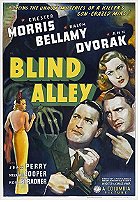 Posted : 4 years, 8 months ago on 19 October 2020 08:36
(A review of Blind Alley)
Posted : 4 years, 8 months ago on 19 October 2020 08:36
(A review of Blind Alley)This was potentially a game changer in 1939, a proto-noir where the action is squared away on psychoanalysis and not on fisticuffs and brute strength. Sure, the Freudian psychobabble hasn’t aged well, but there was a rough charm to the likes of Chester Morris, Ann Dvorak, and Ralph Bellamy that papers over the awkward dialogue. Long before Law & Order transformed interrogation-as-therapeutic-device, Blind Alley laid the foundation and provided a reasonable enough good time.
While this would eventually get remade as The Dark Past with William Holden and Lee J. Cobb subbing in for the two main roles, Morris and Bellamy do them better. Morris’ career was on a prolonged downturn at this point where the former leading man was now regulated to B-pictures and that desperation to reclaim former glories manifests in his work as the prison escapee-cum-psychology patient. It helps that Morris believably projects mental anguish and darkness beneath his handsome exterior.
While Morris gets the showy role, Bellamy has the trickier part to play as the steadfastly calm and who greets all of the twists and turns with a practiced exterior of remote observation. The film’s origins as a stage show are strongly reflected in the numerous scenes between the two men as they play psychological games with one another. It takes consummate skill as a perform to make pop psychology like this scan as gripping drama when so much it is unsophisticated fortune cookie-esque babble.
Director Charles Vidor also manages some smart choices, such as embellishing in a dream sequence that takes place in a child’s POV and keeping the rest rather mundane, and some visual language that would replicate and spread in the likes of films such as John Huston’s The Maltese Falcon. It is a hidden minor work, but still worth a watch for its simple charms.
 0 comments, Reply to this entry
0 comments, Reply to this entry
Just Can’t Get Enough: New Wave Halloween
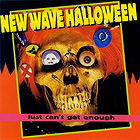 Posted : 4 years, 8 months ago on 19 October 2020 08:35
(A review of Just Can't Get Enough: New Wave Halloween)
Posted : 4 years, 8 months ago on 19 October 2020 08:35
(A review of Just Can't Get Enough: New Wave Halloween)Much like New Wave Xmas, this entry in Just Can’t Get Enough is all peaks and valleys. Mostly valleys as there are six songs named “Halloween” jammed together towards the end of a fifteen-song compilation. That’s not even counting song titles with the word somewhere in them. There isn’t a lot of actual new wave music to be found, but rather a variety of alternative/college-rock radio staples of the 80s like Ministry, Siouxsie and the Banshees, and Sonic Youth.
Does it matter that there’s less songs here specifically about Halloween but rather a plethora giving voice to horror movies and tropes? Not particularly as it creates the kitsch-but-macabre mood promised by the skull festooned with buttons, orange wig, and safety pins on the cover. The B-52’s, Oingo Boingo, and Rocky Horror’s “Time Warp” provide the party anthems, but they couldn’t find any room on this for the Cramps? C’mon, “I Was a Teenage Werewolf,” “The Creature from the Black Leather Lagoon,” “I Ain’t Nuthin’ But a Gorehound,” or “Surfin’ Dead” are practically begging to be added to the mix.
I wonder if they could’ve expanded their horizons a little more and included Blondie’s “The Attack of the Giant Ants,” a 50s sci-fi homage that feeds into the loopy, anarchic spirit of the compilation quite nicely. I mean, special dispensation was already made for a showtune. It would make logical sense for one of the genre’s biggest names and innovators to be given their due, but alas it was not meant to be.
There are a few fun instrumental spins through classic theme songs. MX-80 Sound throw the beloved John Carpenter theme into a noisy punk mosh pit. Comateens update “The Munsters Theme” with shiny synths and a breakneck pace managing to raise an arched brow and ironic smile in the process. But the less said about the novelties like Dave Edmunds’ “The Creature from the Black Lagoon” and Roky Erickson and the Aliens’ “Creature with Atom Brain” the better.
Never quite cohering into a whole, New Wave Halloween just has too many disparate moods and sounds going for it. The noisy mood pieces of Mudhoney doesn’t vibe well with the surprisingly mature melancholy of Ramones’ “Pet Sematary,” for instance. Sonic Youth’s droning “Halloween” is a far cry from the groovy ghoulies of Oingo Boingo’s “Dead Man’s Party.” Still, there’s enjoyment to be had here in individual moments, mainly in the more obscure features on the album.
DOWNLOAD: Rocky Horror Picture Show – “Time Warp,” MX-80 Sound – “Theme from Halloween,” Comateens – “The Munsters Theme”
 0 comments, Reply to this entry
0 comments, Reply to this entry
RCA Country Legends
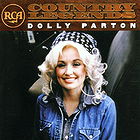 Posted : 4 years, 8 months ago on 19 October 2020 08:35
(A review of RCA Country Legends)
Posted : 4 years, 8 months ago on 19 October 2020 08:35
(A review of RCA Country Legends)Short of a comprehensive multi-disc box set, the best compilation album for Dolly Parton was the two-disc The Essential collection. It surveyed all of her biggest hits across her various career phases: upstart country bombshell, genius songwriter, American icon, pop crossover superstar, return to her musical roots in her late-career bluegrass phase. It’s exhaustive but comprehensive. One-disc compilations for a career as extensive as Parton’s are a fool’s errand, but RCA Country Legends does a competent job of trying.
It's nice to hear a pair of her early 60s singles make an appearance (“False Eyelashes,” “Evening Shade”), and the choices lean heavily towards her 70s output with a few appearances from her pop crossover phase (mainly “9 to 5”). A near unforgivable omission: “Coat of Many Colors,” not only one of her best, most personal songs, but one of the greatest country singles of its era, if not ever. Parton’s simple story of maternal love overcoming debilitating poverty is a hallmark of her career and the genre as whole. Without it, there’s a missing piece to illustrate her unimaginably lustrous career.
Still, country music’s greatest female genius has a plethora of great songs loaded up here: “Jolene,” “Love is Like a Butterfly,” “I Will Always Love You,” “Here You Come Again,” “Joshua.” RCA Country Legends is, I suppose, as good a single-disc retrospective as any of the myriad of others, but it could’ve been so much better. Sixteen songs are a nice primer for Parton’s musical adaptability but nowhere near enough for the complete picture.
DOWNLOAD: “Evening Shade,” “False Eyelashes,” “Daddy’s Moonshine Still”
 0 comments, Reply to this entry
0 comments, Reply to this entry
Celebration
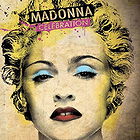 Posted : 4 years, 11 months ago on 6 August 2020 09:49
(A review of Celebration )
Posted : 4 years, 11 months ago on 6 August 2020 09:49
(A review of Celebration )To commemorate the end of her recording contract with Warner Brothers, the label she had been with since 1982, Madonna released Celebration, a career-spanning greatest hits collection. There was the one-disc collection, a haphazard assembly of her biggest hits (with numerous omissions), and a deluxe two-disc variation, better but still a bit sloppy. What Madonna needed was roughly three-discs to cram her entire major output and provide a comprehensive overview of her career up to 2009.
In short, Celebration is not quite the cause for celebration its title and promotion promised. The omitted tracks – “Bedtime Story,” “What it Feels Like for a Girl,” “Deeper and Deeper,” “Human Nature,” “Angel,” “I’ll Remember” – are among some of her best and most underrated. The Madge taketh and she giveth – “Everybody,” “Burning Up,” and “Dress You Up” finally got added to an official compilation album. It seems as though assessing what songs make it on the tracklist and which don’t is a reoccurring problem for her as GHV2 and The Immaculate Collection, for all of their glorious highs, both still managed to chop off actual hits and undervalued gems.
Then there is the problem of the new songs, routine and hilarious pornographic with visuals and vocal performances that feel more generic pop tart than subversive, cultural defining as her best work. “Celebration” is fine, another Euro-disco song about dancing with Madonna voguing through the motions and beats she’s done a thousand times before. “Into the Groove” it is not. While “Revolver” finds her abusing AutoTune and singing through a nasal cavity while Lil Wayne makes a decent cameo appearance as a concession to the kids. (“It’s So Cool” is available digitally and has her repeating New Age mantras with lots of vocal effects and simplistic rhymes that she treats as depth.)
It does drive me bonkers that the songs are seemingly chosen at random and thrown together with as much forethought. Not counting the new songs, disc one opens with “Hung Up” and ends with “Justify My Love,” and disc two has “Dress You Up” and “Cherish.” There’s no rhyme or reason to the sequencing and causes four ballads to pile-up together towards the end. This makes the second disc a bit weaker than the first as that one has “Vogue,” “Music,” and “Ray of Light” to keep the energy up. “Take a Bow,” “Live to Tell,” “Frozen” are all great songs, but the mood turns somber and dour when everything up to this point had largely been upbeat pop maximalism demonstrating the blonde ambition she’s renowned for.
If there are any major takeaways from Celebration, it is just how towering and decade-spanning her genius for pop music is, was, and remains. We’ve never had a pop star quite like her before, and I doubt we’ll see the likes of her kind again. There will of course be imitators to the throne, but none will do with quite the voracious appetite for cultural appropriation, artistic reinvention, political subversion, sexual dominance, and keen ear for bubbling under trends primed for the spotlight. It’s hard to see just how the little moppet of “Everybody” turned into the imperial, icy queen of pop, and then you listen to Celebration and you walk away understanding.
Blonde ambition? Naturally. The real celebration is how the Material Girl’s career has emerged as one where two-discs and 36 songs are still not enough to get the complete picture.
DOWNLOAD: “Celebration (Benny Benassi Remix),” “Revolver,” “It’s So Cool”
 0 comments, Reply to this entry
0 comments, Reply to this entry
We Are Glitter
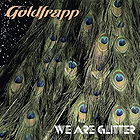 Posted : 4 years, 11 months ago on 6 August 2020 09:49
(A review of We Are Glitter)
Posted : 4 years, 11 months ago on 6 August 2020 09:49
(A review of We Are Glitter)The edgy glam, sensual chic, and booming synths of Supernature get reconfigured on We Are Glitter, Goldfrapp’s remix album. These remixes bring the temperature down and transform them from stomping glam to atmospheric mood pieces. It’s a neat trick, and one that has peaks and valleys depending on who is behind the remix.
While the album proper was filled with unsubtle sexual murmurings, We Are Glitter prefers the slow tease and plenty of warmup before paying off. “Fly Me Away” gets married to Donna Summer’s immortal “I Feel Love,” and makes for a cooing, exquisite flirtation. Same goes for the Flaminng Lips’ remodel of “Satin Chic.” A stomping cabaret number with blaring synths and bass lines throughout gets turned into a fairy tale mist.
If anything, We Are Glitter underscores just how much of a weirdo Alison Goldfrapp really is. Isolating her vocal quirks away from Will Gregory’s sonic backgrounds reveals a penchant for delivering sultry-yet-deranged readings on her erotic imagery or breathy, stone faced declarations of devotion to the dance floor. Maybe not an essential spin for anyone aside from the diehards, but We Are Glitter is a lot of fun.
DOWNLOAD: “Satin Chic (Through the Mystic Mix)”
 0 comments, Reply to this entry
0 comments, Reply to this entry
Solo: A Star Wars Story
 Posted : 4 years, 11 months ago on 6 August 2020 09:48
(A review of Solo: A Star Wars Story)
Posted : 4 years, 11 months ago on 6 August 2020 09:48
(A review of Solo: A Star Wars Story)Chalk the original vision for Solo to the annals of “what might’ve been” cinema as their mid-shoot departure hinted at strife within the galaxy far, far away. As someone who generally enjoyed the new trilogy (it has problems, it has bold ideas), and found Rogue One to be the best modern Star Wars in quite some time, I knew Solo was going to be a meager entry from the word “go.” Did we really need an origin story for the beloved rogue?
I didn’t need to know where Han got his dice, how he met Lando or Chewie, or how he obtained the Falcon. Sometimes a little mystery in the narrative is a good thing. Yet here are all of those beats, and not much more. It is A Star Wars Story, alright. And it’s not much more.
At this point wondering if Disney will allow any of its mega-buster film events to evince something approximating a personality is a fool’s errand. Sure, we’ll be lucky to get a sneaky one under the radar, like Pete’s Dragon, but they are all largely nondescript paint-by-numbers affairs. These are films built and designed in the boardroom, and that can often extend to the MCU which can feel castrated by an aversion to risk until very recently.
The choice to replace Chris Miller and Phil Lord with Ron Howard is a concession to defeat. Howard has no overriding personality as a director, and his work is largely the province of low threat/minimum obligation to craft and art. Looking over his career and you’ll find numerous films that range from “bland” to “great,” but nary a masterpiece. He makes ersatz art built for reaping awards and box office while sending the audience out with a warm, fuzzy feeling.
It's not all terrible as Donald Glover and Phoebe Waller-Bridge managed to leave a lasting impression as a young Lando and his robo-companion, L3-37 (sigh…). Glover finds a swagger and irony within the role that enlivens his scenes, and Waller-Bridge manages to turn L3 into another android with a hilariously untethered personality. There magic is almost enough to counterbalance the strained scenes between Solo and his childhood love interest, Qi’ra (Emilia Clarke), a good girl gone bad.
I say almost because Solo: A Star Wars Story was poor enough to derail Disney’s plans to produce a Star Wars movie every year until brand fatigue set in. Well, it happened much quicker than they thought, and the entire concept of anthology films quickly dissolved like cotton candy in water. Turns out fan service and brand extension for the sake of it aren’t always profitable investments. You must give us some reason to care.
 0 comments, Reply to this entry
0 comments, Reply to this entry
Strange Frame: Love & Sax
 Posted : 4 years, 11 months ago on 6 August 2020 09:47
(A review of Strange Frame: Love & Sax)
Posted : 4 years, 11 months ago on 6 August 2020 09:47
(A review of Strange Frame: Love & Sax)A science-fiction and queer run through a fairly generic premise is almost saved, but not quite, by a unique animation style in Strange Frame: Love and Sax. A street saxophone performer meets girl, hits the big time, manager forces them apart, and topple the oppressive power that be as the strength of their love reunites them in the end. Roll credits. Tale as old time, song as old as rhyme.
Where Strange Frame fascinates the most is in its animation style, somewhere between Lotte Reiniger’s cutouts and PS1 cut scenes. The visuals are more distinctive than the personalities and internal narrative logic, and this does become a case of style overpowering substance. Exactly why are scenes from The Duke is Tops interspersed in a film taking place during the 28th century? There is often no answer to any of the film’s various questions aside from “it looks cool.”
Sure, it’s the trippiest, strangest lesbian movie I’ve ever seen, and a musical no less (even if the songs are deeply unmemorable). A science-fiction animated queer musical – not exactly something you see every day. There’s enough quirky and different on display here to give it a soft recommendation, but there’s not much to feed the imagination and linger there for days afterwards.
 0 comments, Reply to this entry
0 comments, Reply to this entry
Slightly French
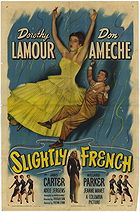 Posted : 4 years, 11 months ago on 6 August 2020 09:46
(A review of Slightly French)
Posted : 4 years, 11 months ago on 6 August 2020 09:46
(A review of Slightly French)A polite, charming riff on Pygmalion was a tyrannical director replaces his leading lady with Dorothy Lamour’s carnival worker. He remakes her entire personality into that of a glamorous French movie star by dangling the carrot of movie stardom and upward mobility. Along the way, she falls in love with him and they get a slightly forced happy ending.
Along the way Dorothy Lamour charms as an eager American guttersnipe, to borrow a phrase from Henry Higgins, that goes about the transformation. Her takedown and desertion of Don Ameche’s director is a huzzah moment where the creation turns toward its creator and demands respect for its agency. He did need her more than she needed him, and their skipping off into the sunset after a romantic reunion feels like the studio forcing Douglas Sirk into the “it’s a comedy so they must wind up together” trap. Although, Ameche was quite handsome, Lamour was a winner, so maybe there was more fertile soil here than may initially appear for their reunion. (Not really, but I’m trying!)
No matter as Slightly French has a lot of fun along the way poking fun at what an American would think Old World sophistication and mannerisms. Sirk knew that transformation was the name of the game in Hollywood. If anything, he indicts Ameche (and all of male Hollywood by extension) of using and abusing its female stars for their own ends. Forcing them to contort into shapes and images of the male imagination and not their own.
 0 comments, Reply to this entry
0 comments, Reply to this entry
Shockproof
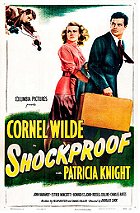 Posted : 4 years, 11 months ago on 6 August 2020 09:45
(A review of Shockproof)
Posted : 4 years, 11 months ago on 6 August 2020 09:45
(A review of Shockproof)Fascinating and compromised in equal measure, Shockproof is the sight of two disparate auterists meeting and finding their work interfered with by the studio. It’s clear that anyone who knows Samuel Fuller or Douglas Sirk’s major works will know that ironies and undercurrents abound, as do endings that don’t give us the cleanest, tidiest wrap-up. The idea of the two of them making a movie together, in which the diseased heart of Fuller meets the delicate arched brow of Sirk, had the potential for cinematic nirvana. And then the studio brought in Helen Deutsch, of Lili and National Velvet fame, to rewrite the script and give the story a happy ending.
Oh well, I suppose, but the intended ending in which the square breaks bad sounds more plausible and probable for everything that preceded it instead of what we got. Our square stays a square and our bad girl reforms into the happy domestic. They find a way to end up together. Sirk loved Fuller’s original script (dubbing it “gutty”) and the studio went and lobotomized it.
We meet Jenny Marsh (Patricia Knight) a bottle blonde fresh out of the big house as he talks with her parole officer, Griff Marat (Cornel Wilde). Griff is clearly enamored with her from the jump, even if he’s consciously unaware of this fact, and goes above and beyond helping Jenny establish a life on the outside, including giving her a job taking care of his mother. But Jenny can’t quite stay away from Harry (John Baragrey), her toxic ex that keeps trying to get her to pull cons and a fast one on Griff.
Jenny winds up marrying Griff, killing Harry, and going on the lam (completed with new darker hair color). And it is in the earliest domestic scenes that Shockproof operates the best. Jenny’s continual sense of arrest, physical, mental, and domestic, creates a palpable tension as she tries to secret away to meet with Harry. Knight’s eyes are where you put your focus in her performance as her body language and reactions say one thing while her eyes say another. Are those crocodile tears or did she honestly transfer her affection from one possessive man to another?
Which is not to say that the last chunk of the film, in which they go on the run, is without merit. The escalating scenes of tension as they’re nearly caught and have to escape, always staying one step ahead, are a tableau of increasing destitution that reflects their emotional space. It becomes clear that these were supposed to be tarnished angels with dirty faces before Deutsch whiz-banged a happily ever after for the pair. That soft-suds rewrite downplays one of Sirk’s favorite subjects: the cost associated with breaching taboos.
 0 comments, Reply to this entry
0 comments, Reply to this entry
 Login
Login
 Home
Home 95 Lists
95 Lists 1531 Reviews
1531 Reviews Collections
Collections